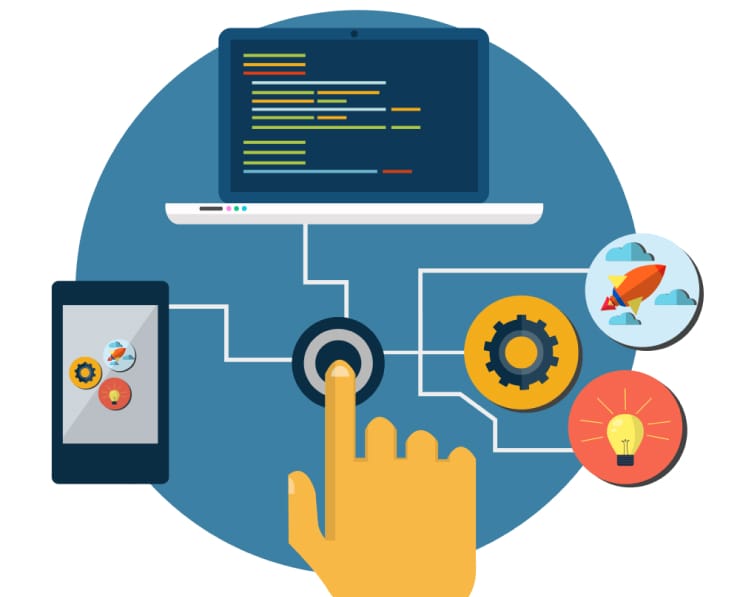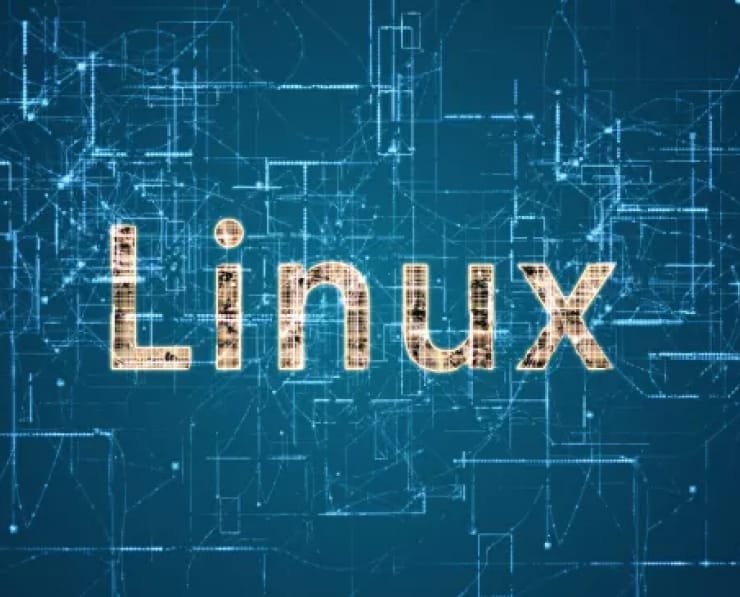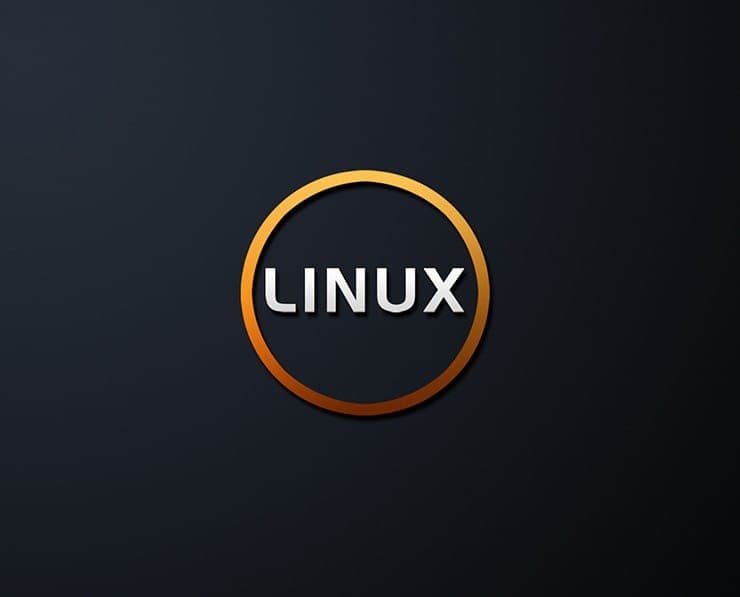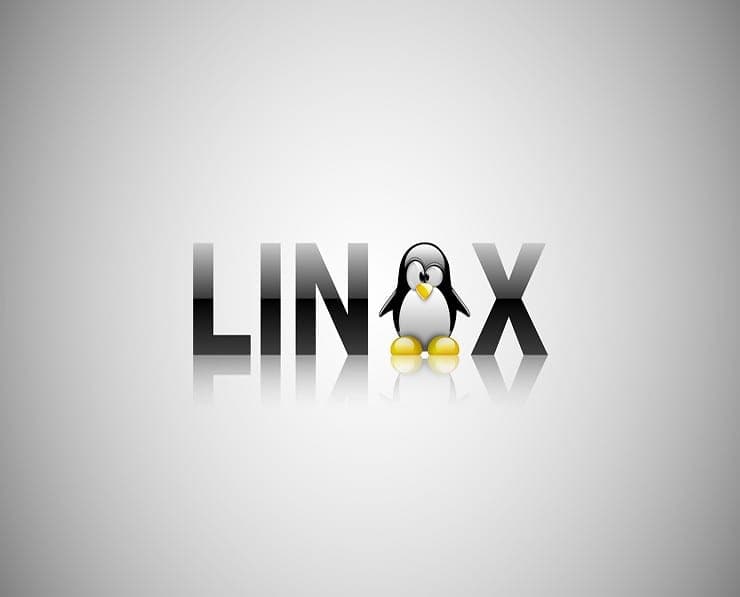Student Feedback
101-500: LPIC-1 Exam 101 Certification Video Training Course Outline
Introduction
Preperation of practice
Introduction to the console
101.1 Determine and configure ha...
101.2 Boot the system
101.3 Change runlevels / boot ta...
102.1: Plan hard disk partitioning
102.2: Install a boot manager
102.3: Manage shared libraries
102.4: Use debian package manage...
102.5: Using RPM and YUM package...
102.6: Linux as guest virtualiza...
103.1: Working on the command line
103.2: Process text streams with...
103.3: Basic file management
103.4: Using streams, pipes and ...
103.5: Create, monitor and termi...
103.6: Change process execution ...
103.7: Searching text files with...
103.8: Basic editing of files
104.1: Create partitions and fil...
104.2: Ensuring the integrity of...
104.3: Controlling the mounting ...
104.5: Manage file access rights...
104.6: Creating and changing sym...
104.7: Find system files and put...
105.1: Customize and use the she...
105.2: Adapt or write simple scr...
106.1: Install and configure X11
106.2: Graphic desktops
106.3: Accessibility
107.1: Manage user and group acc...
107.2: Automate system administr...
107.3: Localization and Internat...
108.1: Manage the system time
108.2: System logging
108.3: Basics of Mail Transfer A...
108.4: Manage printers and print...
109.1: Basics of Internet Protocols
109.2: Persistent network config...
109.3: Basic Network Troubleshoo...
109.4: Configuring the client-si...
110.1: Perform security administ...
110.2: Securing a computer
110.3: Protecting data with encr...
Introduction
101-500: LPIC-1 Exam 101 Certification Video Training Course Info
LPIC-1 101-500 Exam Mastery: Professional Linux System Administration Course
Ace the LPIC-1 101-500 Exam with this comprehensive course that fully covers all certification objectives.
What You Will Learn From This Course
• Cover all LPIC-1 101-500 exam objectives through structured lessons
• Develop a solid foundation in Linux command-line usage and navigation
• Understand Linux system architecture and essential components
• Learn to manage files, directories, and permissions effectively
• Gain practical knowledge of user and group management
• Explore process management and system monitoring tools
• Understand package management and software installation across different Linux distributions
• Learn about basic networking configuration and troubleshooting in Linux
• Gain hands-on experience with shell scripting and automating tasks
• Build confidence to tackle LPIC-1 exam topics and real-world Linux administration tasks
Learning Objectives
By the end of this course, learners will be able to:
Navigate the Linux file system and use command-line tools efficiently
Manage users, groups, and permissions to maintain secure systems.
Monitor system processes and manage system resources.
Install and configure software packages for various Linux distributions.s
Configure and troubleshoot basic networking services and settings
Understand and apply shell scripting techniques to automate administrative tasks.
Interpret Linux system logs and use them for troubleshooting and system monitoring.
Prepare effectively for the LPIC-1 101-500 certification exam with confidence.
Apply practical Linux skills in real-world environments and IT projects.s
Target Audience
This course is designed for a wide range of learners, including:
Aspiring Linux system administrators who want to pass the LPIC-1 101-500 certification exam
IT professionals seeking to enhance their Linux administration skills
College students pursuing IT degrees and looking to gain Linux expertise.
Individuals transitioning into IT careers with a focus on Linux and open-source systems.
Existing Linux users who want to solidify foundational knowledge and prepare for certification
Professionals seeking career advancement by adding globally recognized Linux credentials to their portfolio
Requirements
Learners taking this course should have:
General familiarity with computers and basic IT concepts
Interest in pursuing a Linux system administration or IT career growth
Motivation to learn Linux command-line operations and system management
Willingness to engage in hands-on practice with Linux systems and exercises
Access to a Linux environment, either through virtual machines, cloud instances, or physical hardware
Prerequisites
While there are no strict prerequisites, learners will benefit from:
Basic knowledge of operating systems, file systems, and computer architecture
Familiarity with general IT terminology and concepts
Prior exposure to Linux desktop environments or command-line interfaces
Understanding of fundamental networking and hardware concepts
The first part of this course introduces learners to the Linux operating system, the command-line interface, and the fundamental architecture of Linux systems. The Linux operating system is built on an open-source kernel that powers countless servers, desktops, and embedded devices around the world. Understanding the architecture is essential for system administration, as it allows administrators to interact efficiently with hardware and software components. Linux distributions package the kernel with tools, libraries, and user interfaces, resulting in systems like Ubuntu, CentOS, Debian, and Fedora. Each distribution may differ in package management, default configurations, and administrative tools, but the core concepts remain consistent, making it important for learners to understand both the general principles and specific distribution nuances.
Navigating the Linux file system is a fundamental skill for any aspiring administrator. The Linux file system follows a hierarchical structure starting at the root directory, with standard subdirectories such as /bin for essential binaries, /etc for system configuration files, /home for user directories, and /var for variable data like logs. Learners will practice using commands such as ls, cd, pwd, mkdir, rmdir, and rm to traverse directories, create and delete files, and view file details. Permissions and ownership are a critical component of Linux security. Understanding file and directory permissions, the concepts of user, group, and others, and commands like chmod, chown, and chgrp ensures learners can secure files and manage access effectively.
User and group management is another core topic. Linux systems rely on a combination of users and groups to control access to system resources. Administrators need to add, modify, and delete users and groups while assigning appropriate permissions. Commands like useradd, usermod, groupadd, and passwd will be covered in depth, along with the importance of secure password policies. In addition to managing users, learners will explore process management and system monitoring. Linux provides tools such as ps, top, htop, and systemctl to view running processes, check system resource usage, and manage services. Understanding how to identify resource-intensive processes, control background jobs, and manage system services is crucial for maintaining a stable Linux environment.
Package management varies across distributions but remains a key area for system administration. Learners will explore package managers such as apt for Debian-based distributions, yum or dnf for Red Hat-based distributions, and zypper for SUSE-based distributions. Installing, updating, and removing software packages is a fundamental skill for both daily operations and exam preparation. Networking basics are also covered, including IP addressing, subnetting, hostname configuration, and connecting to remote systems using SSH. Troubleshooting common networking issues and using commands like ping, traceroute, and netstat will prepare learners for real-world tasks and certification questions.
Shell scripting is introduced to help learners automate repetitive tasks, manage system operations, and create efficient workflows. Topics include scripting syntax, variables, conditional statements, loops, and executing scripts. Practical examples show how scripting can streamline administration tasks and ensure consistency across systems. Logging and monitoring are additional areas of focus. Linux generates extensive logs that provide insights into system behavior and help identify issues. Commands such as journalctl, tail, and grep will be covered to teach learners how to analyze logs and use them for troubleshooting.
Throughout this course, learners are encouraged to practice hands-on exercises in a controlled environment. This approach reinforces understanding and ensures that learners can apply theoretical concepts practically. Quizzes at the end of sections allow learners to review material, retain knowledge, and build confidence for the LPIC-1 101-500 exam. By the end of this first part, learners will have a strong foundation in Linux fundamentals, command-line operations, file and user management, process control, networking basics, and introductory shell scripting. These skills form the basis for more advanced topics and prepare learners for subsequent parts of the course focused on deepening expertise and tackling the full LPIC-1 exam objectives.
Course Modules / Sections
This part of the course is structured into comprehensive modules designed to expand learners' Linux knowledge and prepare them for real-world system administration as well as the LPIC-1 101-500 certification exam. Each module is organized to provide both theoretical understanding and hands-on experience to ensure learners can apply concepts effectively in practical scenarios. The modules cover foundational topics in Linux system management, including user administration, package management, systemd configuration, networking, security, and scripting, with each module building on the skills acquired in previous lessons.
The first module focuses on advanced file system management and permissions. Learners explore the intricacies of Linux file system hierarchy, including critical directories such as /etc, /var, /opt, and /usr. The module also covers mounting and unmounting file systems, configuring swap space, understanding file system types like ext4, XFS, and Btrfs, and performing integrity checks with tools such as fsck. In addition, learners gain in-depth knowledge of permissions, ownership, and Access Control Lists (ACLs), enabling precise control over files and directories across multiple users and groups.
The second module introduces comprehensive user and group management. Building on the basic commands, learners dive into configuring user accounts with attributes such as UID, GID, home directories, shell assignments, and password policies. Advanced group management techniques are discussed, including supplementary groups, group file management, and automating user provisioning. These topics are essential for creating secure multi-user environments and ensuring compliance with organizational policies.
The third module centers on software and package management. Learners work with different package management tools for various Linux distributions, including apt for Debian-based systems, yum and dnf for Red Hat-based systems, and zypper for SUSE. Topics include searching for packages, resolving dependencies, updating software, handling repositories, and compiling software from source. This module also covers best practices for managing updates and ensuring system stability, preparing learners to maintain production systems efficiently.
The fourth module explores system services and initialization with systemd. Learners understand the architecture of systemd, how to manage services using systemctl, configure service units, analyze logs with journalctl, and handle startup targets. This module also includes managing timers, socket units, and dependency management for service startup. Understanding systemd is critical for exam success and practical administration, as it is the backbone of modern Linux system management.
The fifth module focuses on process management and system monitoring. Learners study how to view running processes, prioritize workloads, manage background jobs, and troubleshoot performance issues. Tools covered include ps, top, htop, nice, renice, kill, and pkill. Resource monitoring using commands like free, df, du, vmstat, iostat, and sar is also included. This module emphasizes real-world monitoring strategies to keep systems stable and performant.
The sixth module covers Linux networking fundamentals. Learners explore IP configuration, routing, DNS resolution, hostname management, firewall configuration, and network troubleshooting. Commands and tools such as ip, ifconfig, ping, traceroute, netstat, ss, and iptables are demonstrated in practical exercises. This module prepares learners to maintain network connectivity, configure network services, and troubleshoot common networking issues.
The seventh module introduces shell scripting and task automation. Learners gain proficiency in writing scripts to automate repetitive administrative tasks. The module covers scripting syntax, variables, loops, conditional statements, functions, and command substitution. Practical exercises include automating user management, log monitoring, software installation, and system health checks. Scripting is emphasized as a tool to increase efficiency and reduce the risk of human error.
The eighth module focuses on system security and access control. Learners explore authentication methods, sudo configuration, password policies, SELinux and AppArmor basics, and firewalls. Topics also include secure file transfer, SSH key management, and auditing system activity. Security is integrated throughout the course to instill best practices and ensure learners are prepared for real-world Linux administration challenges.
Key Topics Covered
This part of the course includes extensive coverage of topics essential for LPIC-1 101-500 exam success and practical Linux administration:
Advanced Linux file system hierarchy and directory management
File permissions, ownership, and Access Control Lists
Mounting, unmounting, and managing different file system types
Swap space configuration and disk space monitoring
Advanced user and group management
Configuring user attributes, group memberships, and password policies
Automating user account provisioning
Package management tools and techniques across Debian, Red Hat, and SUSE distributions
Resolving dependencies, updating software, and compiling from source.
Managing repositories and ensuring system stability
Systemd architecture, service management, and unit configuration
Startup targets, timers, and service dependencies
System monitoring and process management
Prioritizing processes, managing jobs, and analyzing resource usage
Linux networking fundamentals, IP configuration, routing, and DNS
Firewall configuration, troubleshooting connectivity, and secure remote access
Shell scripting, automation of administrative tasks, and task scheduling
System security fundamentals, sudo configuration, password policies, and access control
Introduction to SELinux and AppArmor, file transfer security, and auditing activity
These topics are carefully structured to provide learners with both theoretical knowledge and hands-on skills required to perform effectively as Linux administrators and succeed in the LPIC-1 101-500 exam.
Teaching Methodology
The teaching methodology emphasizes a blend of video instruction, guided demonstrations, hands-on exercises, and practical assessments. Learners begin with instructor-led video lectures that explain concepts clearly and provide real-world context. Demonstrations of commands, system configurations, and troubleshooting scenarios are shown on actual Linux systems to reinforce understanding.
Hands-on labs follow each lesson, allowing learners to practice skills immediately and solidify knowledge. Labs include tasks such as managing users, configuring networks, installing packages, monitoring system performance, and scripting automation. This approach ensures learners gain practical experience and confidence in their abilities.
Concept reinforcement is provided through practice quizzes and mini-exercises embedded throughout each module. These exercises encourage active recall, strengthen memory retention, and provide immediate feedback. Learners are also encouraged to experiment in sandboxed Linux environments, such as virtual machines or cloud-based instances, to gain experience without risking production systems.
Instructor guidance is integrated into the course, with detailed explanations of complex topics, troubleshooting tips, and best practices for Linux administration. Scenarios are presented in a way that mirrors real-world challenges, helping learners develop problem-solving skills and practical knowledge. Each lesson is carefully sequenced to gradually increase in difficulty while maintaining a clear, logical progression.
Visual aids, diagrams, and command examples are used throughout the course to illustrate abstract concepts and improve comprehension. Learners are encouraged to follow along with exercises, replicate examples, and explore variations to deepen understanding. The teaching methodology combines theory, practice, and critical thinking to create a well-rounded learning experience.
Assessment & Evaluation
Assessment in this course is designed to track learner progress, reinforce understanding, and prepare students for the LPIC-1 101-500 certification exam. Each module includes practice quizzes covering key concepts and commands. Quizzes are structured to test both theoretical knowledge and practical application, ensuring learners can apply what they have learned in real scenarios.
Hands-on labs are evaluated based on completion, accuracy, and adherence to best practices. Learners are encouraged to perform tasks such as configuring users, managing processes, and writing scripts, which are then compared against expected outcomes. Immediate feedback allows learners to identify mistakes, correct them, and gain a deeper understanding of Linux system administration.
At the end of the course, a comprehensive practice exam simulates the LPIC-1 101-500 certification test environment. The exam includes questions on file systems, user management, package management, systemd, networking, security, and shell scripting. Scoring and review mechanisms help learners identify strengths and weaknesses, guiding further study and preparation.
Progress tracking is integrated into the learning platform, allowing learners to monitor their mastery of each topic and module. This evaluation approach encourages consistent learning, ensures retention of critical concepts, and builds confidence in preparation for the actual LPIC-1 101-500 exam.
Practical exercises are emphasized throughout as a key assessment tool. By completing tasks in a controlled environment, learners demonstrate their ability to apply theoretical knowledge to real-world Linux administration scenarios. Assessments are designed to be both challenging and educational, providing learners with the skills and confidence required to succeed in professional environments.
Benefits of the Course
This course provides learners with a comprehensive foundation in Linux system administration and equips them with the knowledge and skills required to pass the LPIC-1 101-500 certification exam. By completing this course, learners will gain the ability to manage Linux systems effectively in real-world environments. One of the primary benefits is mastering Linux command-line operations, which allows administrators to perform a wide variety of tasks quickly and efficiently. Understanding the Linux file system hierarchy, permissions, and ownership ensures learners can maintain system security and organize data effectively.
Learners also benefit from gaining advanced knowledge in user and group management, enabling them to create and maintain secure multi-user environments. Skills acquired in process management, system monitoring, and resource allocation help ensure systems run smoothly and efficiently. The course provides extensive training on package management and software installation, giving learners the ability to maintain and update Linux systems across different distributions.
Another key benefit is learning systemd and service management, which is essential for controlling and configuring system services. Learners also develop skills in networking, including IP configuration, routing, DNS management, firewall setup, and troubleshooting network issues. The course emphasizes practical application through hands-on labs and exercises, allowing learners to practice tasks such as scripting automation, log analysis, and system security configuration.
In addition to technical skills, this course enhances problem-solving abilities by exposing learners to real-world scenarios and guided troubleshooting exercises. By understanding Linux security practices, learners can implement secure configurations, manage user privileges, and protect systems from potential threats. Preparing for the LPIC-1 101-500 exam also increases professional credibility and improves career prospects, as certification is recognized worldwide by employers seeking skilled Linux administrators. Completing this course equips learners with both theoretical knowledge and practical expertise, making them capable and confident Linux professionals.
Course Duration
The course is structured to provide thorough coverage of all LPIC-1 101-500 exam objectives while allowing learners to progress at a steady pace. On average, learners can expect to spend between 40 and 50 hours completing all modules, including video lessons, hands-on labs, quizzes, and practice exams. The duration is designed to accommodate both full-time learners who wish to complete the course quickly and part-time learners who prefer to study at a more flexible pace.
Each module is carefully segmented into lessons that focus on specific topics, enabling learners to absorb information in manageable portions. Hands-on exercises and practical labs are embedded within each module, requiring additional time for application and practice. Learners are encouraged to dedicate time to practicing commands, exploring system configurations, and completing scripting exercises to ensure retention and comprehension.
The course also includes periodic review sections and practice quizzes that reinforce key concepts. These reviews may require additional time, but are essential for reinforcing knowledge and preparing for the LPIC-1 101-500 certification exam. The final practice exam is designed to simulate the real certification experience, providing learners with a benchmark for readiness and areas that require additional focus. By following the recommended schedule and engaging fully with all course materials, learners can achieve mastery of Linux administration and confidently attempt the LPIC-1 101-500 exam within the expected duration.
Tools & Resources Required
To gain the most from this course, learners should have access to certain tools and resources that facilitate hands-on practice and practical application of Linux concepts. A Linux system environment is required, which can be provided through virtual machines, cloud-based servers, or physical hardware. Popular virtualization tools such as VirtualBox, VMware, or cloud platforms like AWS, Google Cloud, or Azure allow learners to create and configure Linux instances for experimentation without affecting production systems.
A text editor is essential for editing configuration files, writing shell scripts, and performing system administration tasks. Common Linux text editors, such as Vim, Nano, or graphical editors like Ged, are recommended. Learners will also need access to command-line terminals to execute Linux commands, manage processes, and interact with the system directly.
The course provides downloadable lab instructions, exercises, and sample scripts to guide learners through practical activities. These resources allow learners to replicate real-world scenarios, configure services, and test solutions in a controlled environment. Access to official Linux documentation and community resources, such as man pages and online forums, is also highly beneficial for understanding command syntax, troubleshooting issues, and exploring advanced topics beyond the course curriculum.
Networking tools and utilities are required to practice configuration and troubleshooting exercises. Commands like ping, traceroute, netstat, and ip are used throughout the course to simulate network scenarios and teach learners how to diagnose connectivity problems. Additionally, learners are encouraged to maintain a workspace that supports file management, logging, and version control for scripts and configuration files, ensuring that all tasks are organized and easily retrievable.
Security tools and monitoring utilities are included in the labs and exercises, allowing learners to practice system hardening, analyze logs, and implement access controls. This includes working with sudo privileges, user authentication, firewall configuration, and auditing system activity. By having these tools and resources available, learners gain a realistic and practical understanding of Linux administration, preparing them for both the LPIC-1 101-500 exam and professional system administration responsibilities.
Completing the course with these tools and resources ensures that learners can apply their knowledge effectively, experiment with configurations, and develop a confident approach to Linux system administration. The combination of theoretical instruction, hands-on labs, and access to essential tools creates an immersive learning experience that equips learners with the technical competence and problem-solving skills necessary for real-world Linux environments.
Career Opportunities
Completing the LPIC-1 101-500 course opens a wide range of career opportunities in the field of Linux system administration and IT infrastructure management. Certified Linux administrators are highly sought after in organizations that rely on Linux-based systems, servers, and cloud environments. These roles include system administrator, network administrator, Linux support engineer, DevOps engineer, IT operations specialist, cloud administrator, and security administrator. Employers recognize LPIC-1 certification as a validation of practical Linux skills and problem-solving abilities, making certified professionals more competitive in the job market.
Linux is widely used in enterprise environments, web hosting, cloud platforms, and large-scale IT infrastructures, creating a consistent demand for skilled administrators. Professionals with LPIC-1 certification can work with servers, manage networks, configure services, troubleshoot system issues, and automate administrative tasks. Companies in technology, finance, healthcare, government, and telecommunications often require Linux expertise for critical operations, system reliability, and security.
LPIC-1 certification also prepares learners for career progression. Individuals can advance to mid-level and senior Linux administration roles, specialize in security or cloud administration, or transition into DevOps and system engineering careers. Organizations value professionals who can combine Linux skills with problem-solving, automation, and network management. Certification provides credibility and demonstrates a commitment to professional growth, which can lead to higher salaries, promotions, and more challenging projects.
Freelancing and remote work opportunities are also available for LPIC-1 certified professionals. Many small businesses, startups, and clients on a global scale seek Linux experts for short-term projects, cloud deployment, system configuration, and security consulting. Certification provides credibility and trust for clients, making it easier to secure projects and build a professional reputation. With the global nature of Linux technology, certified administrators can work in multiple regions and industries, offering flexibility and career mobility.
Beyond traditional roles, LPIC-1 certification prepares learners to pursue further certifications and specialization. For example, LPIC-2 and LPIC-3 certifications allow professionals to expand their knowledge in advanced Linux administration, network management, virtualization, and security. This continuous learning path enhances long-term career prospects and positions professionals as experts in the Linux ecosystem. Knowledge gained from this course also supports complementary certifications in cloud computing, DevOps, containerization, and security, increasing career versatility.
The practical skills gained through the course, including command-line expertise, system monitoring, process management, package management, networking, shell scripting, and security configuration, directly translate to job responsibilities. Employers value candidates who can handle real-world Linux tasks efficiently, automate workflows, and troubleshoot complex problems. With LPIC-1 certification, professionals can contribute to maintaining secure, stable, and high-performing systems, ensuring business continuity and operational success.
Certification also enhances networking opportunities. Professionals who earn LPIC-1 certification can join Linux communities, forums, and professional groups, where they can share knowledge, learn best practices, and access career opportunities. Being part of the global Linux ecosystem provides exposure to industry trends, tools, and emerging technologies. Engaging with the community supports continuous learning, keeps skills updated, and increases visibility among potential employers.
The course prepares learners to adapt to diverse work environments, including traditional data centers, cloud platforms, virtualized environments, and containerized applications. LPIC-1 certification equips learners with the skills to manage Linux servers across multiple distributions, ensuring versatility and employability. Professionals gain confidence to implement automation, improve system efficiency, and maintain a reliable IT infrastructure, which are critical skills for IT departments and technology-driven organizations.
Completing this course demonstrates initiative, technical competence, and dedication to professional growth, which are attractive qualities for employers. The knowledge acquired ensures that certified professionals can handle both routine administrative tasks and complex troubleshooting scenarios. Mastery of Linux fundamentals also provides a solid foundation for career advancement, allowing professionals to specialize in areas such as cloud administration, network security, DevOps, system architecture, or software deployment.
Conclusion
The LPIC-1 101-500 course provides a complete roadmap for mastering Linux system administration and preparing for the certification exam. Through structured modules, learners gain a comprehensive understanding of Linux fundamentals, advanced administration techniques, process and user management, networking, security, shell scripting, and system monitoring. The course balances theoretical knowledge with practical, hands-on experience to ensure that learners can apply concepts effectively in real-world environments.
The course is designed to be accessible to beginners while providing depth for intermediate users. Step-by-step instructions, guided demonstrations, practical labs, and assessments allow learners to build skills progressively. By completing the course, learners develop the confidence to manage Linux systems, troubleshoot issues, and implement best practices for system reliability and security. Practical exercises reinforce learning, while quizzes and practice exams ensure that knowledge is retained and ready for application in professional settings.
Completing the LPIC-1 101-500 certification preparation course equips learners with both the technical expertise and the strategic understanding required for Linux system administration roles. It provides the tools to succeed in a competitive job market, achieve professional recognition, and unlock career advancement opportunities. The combination of comprehensive content, hands-on labs, and practical assessments ensures that learners are not only ready for the exam but also prepared to handle real-world Linux administration challenges with confidence and competence.
The course emphasizes critical areas that are highly relevant for day-to-day administration, such as file system management, user and group configuration, package management, systemd service control, networking setup, security best practices, and task automation through scripting. By mastering these areas, learners can ensure system stability, efficiency, and security in professional IT environments.
This course also provides a strong foundation for further professional development. Learners who complete the LPIC-1 101-500 course are well-positioned to pursue higher-level certifications, explore specialization in cloud and DevOps roles, and expand their technical portfolio. The practical skills, structured learning approach, and exam-focused preparation ensure that learners can transition seamlessly from training to professional application.
Enroll Today
Enrolling in the LPIC-1 101-500 course is a decisive step toward building a successful career in Linux system administration. The course provides comprehensive content, practical exercises, and assessment tools to prepare learners thoroughly for the LPIC-1 exam and professional Linux administration roles. By enrolling, learners gain access to structured modules, guided labs, practice quizzes, and real-world examples that enhance understanding and retention.
This course offers a unique combination of expert instruction, hands-on practice, and exam-focused preparation. Learners develop the confidence to manage Linux systems, implement automation, troubleshoot complex issues, and maintain secure, reliable IT infrastructure. LPIC-1 certification provides recognition of professional competence, opens doors to career opportunities, and increases earning potential.
Enrollment provides lifelong access to course materials, allowing learners to review concepts, revisit labs, and reinforce their skills at any time. Access to downloadable resources, example scripts, and lab instructions ensures learners can practice and experiment in their own Linux environments. Guidance from an experienced instructor helps learners understand complex topics, apply best practices, and stay motivated throughout the learning journey.
By enrolling today, learners can start building the skills necessary for a rewarding career in Linux administration. The course is suitable for beginners, intermediate users, and IT professionals seeking certification or skill enhancement. With a focus on practical application, exam readiness, and professional development, the LPIC-1 101-500 course equips learners to succeed in their careers, achieve certification, and confidently navigate the Linux ecosystem.
This course represents a complete pathway to mastering Linux system administration. It empowers learners with the knowledge, skills, and confidence to work in diverse IT environments, tackle challenging technical problems, and contribute effectively to organizational success. By enrolling today, learners take the first step toward becoming skilled Linux professionals, prepared to meet the demands of a competitive and evolving technology landscape.










